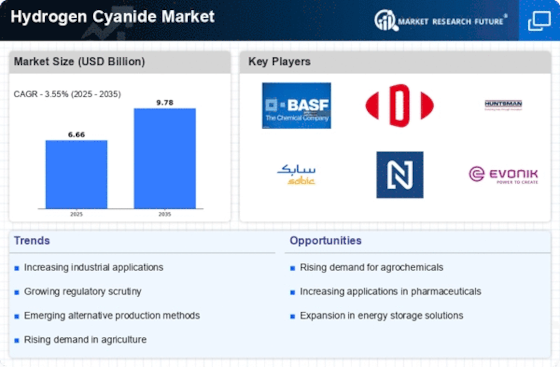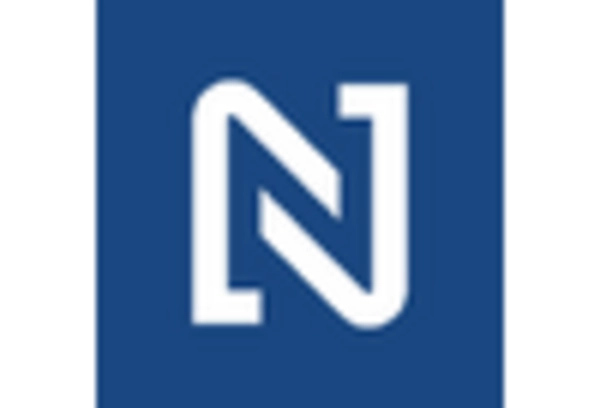Rising Demand in Chemical Synthesis
The Hydrogen Cyanide Market is experiencing a notable increase in demand due to its critical role in chemical synthesis. Hydrogen cyanide serves as a precursor for various chemicals, including plastics, synthetic fibers, and pharmaceuticals. The market for these end-products is expanding, driven by the growing need for advanced materials and chemicals in multiple sectors. For instance, the production of acrylonitrile, a key component in the manufacture of acrylic fibers and plastics, relies heavily on hydrogen cyanide. As industries continue to innovate and expand, the Hydrogen Cyanide Market is likely to see sustained growth, with projections indicating a compound annual growth rate that reflects the increasing reliance on this compound in diverse applications.
Growth in Mining and Metal Processing
The Hydrogen Cyanide Market is also benefiting from its applications in the mining and metal processing sectors. Hydrogen cyanide is employed in the extraction of precious metals, particularly gold, through processes such as cyanidation. As the demand for gold and other metals continues to rise, driven by technological advancements and investment in infrastructure, the need for hydrogen cyanide in these processes is likely to increase. The mining sector's recovery and expansion in various regions may further bolster the hydrogen cyanide market, with estimates indicating a potential increase in consumption rates as mining operations ramp up to meet global demands.
Emerging Markets and Economic Development
The Hydrogen Cyanide Market is poised for growth in emerging markets, where economic development is spurring industrialization and urbanization. As countries develop, there is a rising demand for chemicals and materials that hydrogen cyanide can provide. Industries such as construction, automotive, and textiles are expanding, leading to increased consumption of hydrogen cyanide in various applications. Furthermore, the establishment of new manufacturing facilities in these regions may create additional demand for hydrogen cyanide, as local industries seek to leverage its properties for production. This trend suggests a promising outlook for the hydrogen cyanide market in developing economies, where industrial growth is anticipated to drive market expansion.
Regulatory Framework and Safety Standards
The Hydrogen Cyanide Market is significantly shaped by the evolving regulatory framework and safety standards governing chemical production and usage. Governments and regulatory bodies are increasingly focusing on ensuring safe handling and environmental protection concerning hazardous substances like hydrogen cyanide. Compliance with these regulations can drive innovation in safety technologies and practices within the industry. Companies that adapt to these regulations may gain a competitive edge, as they can assure customers of their commitment to safety and sustainability. This regulatory landscape may also influence market dynamics, as firms invest in safer production methods and technologies, potentially leading to a more stable and responsible hydrogen cyanide market.
Agricultural Applications and Pesticide Production
The Hydrogen Cyanide Market is significantly influenced by its applications in agriculture, particularly in the production of pesticides and fumigants. Hydrogen cyanide is utilized in the synthesis of various agrochemicals, which are essential for enhancing crop yields and protecting against pests. The increasing global population and the corresponding demand for food are driving the agricultural sector to adopt more effective pest control measures. Consequently, the market for hydrogen cyanide is expected to expand as agricultural practices evolve. Reports suggest that the agricultural segment could account for a substantial share of the overall hydrogen cyanide market, reflecting the compound's importance in ensuring food security and sustainable farming practices.

















Leave a Comment